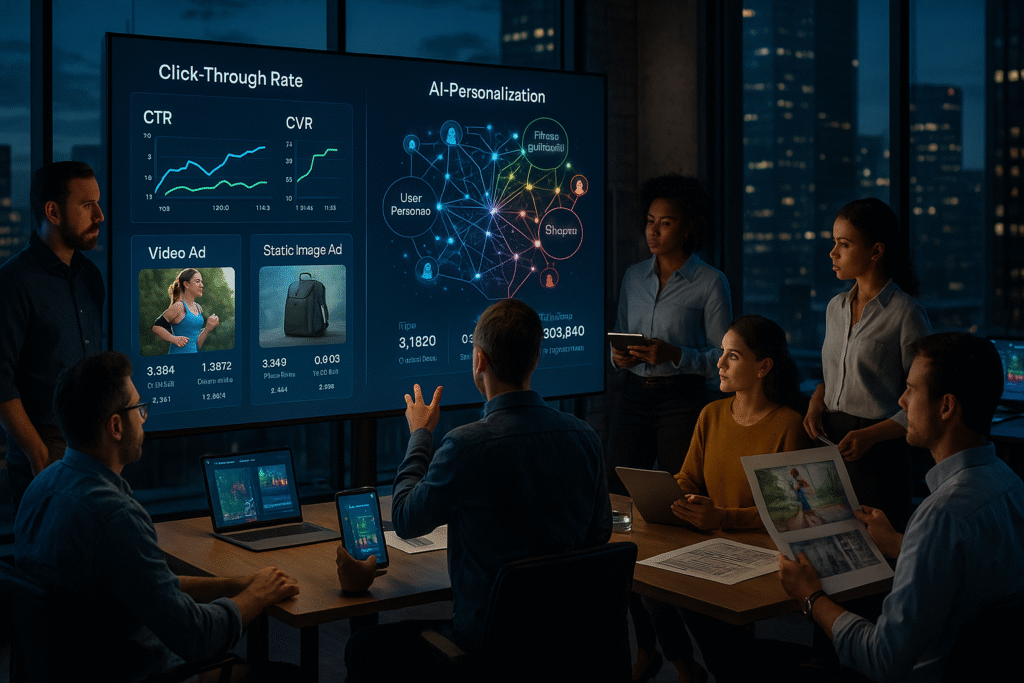Keywords: Click-Through Rate (CTR), Conversion Rate (CVR), digital marketing analytics, ad format comparison, video ads vs. image ads, personalization, AI in marketing, CRO, user experience, predictive modeling, overfitting, multi-interest models
Introduction: Why CTR and Conversion Rate Optimization Matter in Digital Marketing
In today’s highly competitive digital landscape, maximizing your Click-Through Rate (CTR) and Conversion Rate (CVR) is crucial for online advertising success. Businesses pour millions into ads hoping to convert viewers into loyal customers. But which factors truly move the needle? How do choices like video ads vs. static image ads impact results? And what advanced analytics or AI models can marketers use to drive more meaningful engagement and ROI?
In this guide, we break down the latest research and actionable strategies to boost your CTR and conversion rates—backed by recent scientific studies and real-world examples.
What Is Click-Through Rate (CTR) and Why Is It So Important?
CTR is a key metric in digital advertising, representing the percentage of users who click on your ad after seeing it. High CTR means your ads are relevant and compelling to your audience. But improving CTR isn’t just about clever copy or eye-catching design—it’s a science that involves understanding user behavior, leveraging personalization, and utilizing the right ad formats.
Conversion Rate (CVR) measures how many people who click your ad go on to complete a desired action, such as making a purchase or signing up for a newsletter. Optimizing both CTR and CVR is essential for maximizing the ROI of your digital marketing campaigns.
How Personalization and Predictive Modeling Improve CTR and Conversion Rates
1. The Problem with Traditional CTR and CVR Models
Recent research has revealed a major issue: traditional CTR and CVR models are often biased, counting conversions from users who would have purchased anyway—even without seeing your ad. This leads to inaccurate performance measurement and wasted ad spend.
Solution: A new metric called True Post-Click Conversion Rate (TCVR) focuses only on users whose conversions were truly influenced by the ad, excluding “free-riders.” This model uses Group-Stratified Counterfactual Inference (GCI) to more accurately estimate ad effectiveness.
Key takeaway: Measuring the true impact of your ads requires advanced modeling and a focus on actual ad-driven conversions, not just total clicks and sales.
2. Capturing Diverse and Dynamic User Interests with AI
Many companies struggle to capture the wide variety of user interests, which limits the effectiveness of traditional CTR prediction models. The latest AI techniques—like the Attentive Capsule Network (ACN)—analyze previous user behaviors to categorize users into multiple interest groups (e.g., “Tech Enthusiast” AND “Fitness Enthusiast”). This makes ad targeting far more relevant and increases both CTR and conversion rates.
Example:
If a user clicks on ads for both smartwatches and running gear, showing them a long-lasting headset for running is much more likely to convert.
Advanced models like the Deep Multi-Interest Network (DMIN) track how user preferences evolve over time, improving predictions for which ads they’ll actually click on next.
User Experience: The Hidden Factor in CTR and Ad Format Effectiveness
1. Key UX Factors That Influence CTR
- Personalization: Increases engagement and CTR.
- Intrusiveness: Reduces engagement; overly intrusive ads can drive users away.
- Mobile Optimization: Essential for today’s on-the-go consumers—ads that load fast and fit the screen increase CTR.
- Ad Placement and Visibility: Ads that appear in visible, high-traffic areas get more clicks.
- Brand Awareness: Trusted brands see higher CTR.
- Ad Fatigue: Overexposure to the same ad lowers engagement.
Research shows that ad placement and mobile optimization have a positive impact, while intrusive ads and ad fatigue lower CTR.
2. Video Ads vs. Static Image Ads: Which Performs Better?
- Video Ads: Often increase engagement, capturing attention with movement and sound. However, they can be more intrusive and slower to load, especially on mobile.
- Static Image Ads: Load faster and are more mobile-friendly, boosting CTR by offering a smoother user experience. However, they may not always grab attention as effectively as videos.
Pro tip: The best ad format depends on your target audience and campaign goals. For users with evolving interests, video may be better; for quick mobile interactions, static images often win.
Overcoming Common Challenges: Overfitting and Data Sparsity in CTR Prediction
1. The Overfitting Trap
Deep learning models used for CTR prediction are prone to overfitting—they work well in the first training cycle but performance drops sharply afterward. Why? Because digital advertising data is sparse and high-dimensional (think billions of unique ad and user features).
- Fast optimizers like Adam can cause the model to overfit quickly.
- Filtering out rare features can help, but might reduce accuracy.
- Solution: In many cases, the best model is found in the very first training cycle—so don’t overtrain!
2. The Data Sparsity Problem
Traditional CVR models struggle because far fewer users convert than click. The latest research proposes multi-task learning models like the Entire Space Multi-Task Model (ESMC), which break down the user decision path and use parameter constraints to improve conversion estimation.
Real-world results: Online A/B tests on Alibaba’s platform showed a +1.05% increase in orders and +1.00% increase in revenue using these advanced models.
Actionable Strategies to Boost CTR and Conversion Rates in Your Digital Marketing
1. Personalize Your Ads
- Use AI-powered models to analyze user behavior and predict interests.
- Segment users into multiple categories based on browsing and purchase history.
- Serve dynamic ads that match these complex user profiles.
2. Choose the Right Ad Format for Your Audience
- Test both video and static image ads to see which performs best with your audience.
- Optimize for mobile: use lightweight, fast-loading ads for mobile-heavy demographics.
3. Monitor and Optimize User Experience
- Avoid intrusive ad formats that disrupt user flow.
- Place ads in high-visibility, relevant sections of your site or app.
- Limit ad frequency to prevent fatigue and boost engagement.
4. Adopt Advanced Predictive Models
- Use state-of-the-art models like ACN, DMIN, and ESMC for more accurate CTR and CVR prediction.
- Implement metrics like True Post-Click Conversion Rate (TCVR) to measure real ad impact.
5. Regularly Review and Adjust Campaigns
- Watch for signs of overfitting in your models.
- Continuously A/B test new creative, formats, and targeting strategies.
Conclusion: The Future of CTR and Conversion Optimization
Digital marketing success is no longer about simple metrics and intuition. Leveraging AI, advanced modeling, and a laser focus on user experience are the keys to higher CTR and conversion rates. The ad format you choose—video vs. static image—matters, but it’s even more important to understand your audience, personalize at scale, and embrace data-driven decision-making.
The next frontier: Real-time behavioral tracking and adaptive ad optimization will separate the best marketers from the rest.
References
- Gu, T., et al. (2021). Estimating true post-click conversion via group-stratified counterfactual inference. ACM SIGKDD Conference
- Jiang, Z., et al. (2023). ESMC: Entire Space Multi-Task Model for Post-Click Conversion Rate via Parameter Constraint. arXiv preprint
- Li, D., et al. (2021). Attentive capsule network for click-through rate and conversion rate prediction in online advertising. Knowledge-Based Systems
- Shah, A., & Nasnodkar, S. (2021). The impacts of user experience metrics on click-through rate (CTR) in digital advertising: A machine learning approach. Sage Science Review
- Wen, H., et al. (2020). Entire space multi-task modeling via post-click behavior decomposition for conversion rate prediction. ACM SIGIR Conference
- Xiao, Z., et al. (2020). Deep multi-interest network for click-through rate prediction. ACM Conference on Information & Knowledge Management
- Zhang, Z. Y., et al. (2022). Towards understanding the overfitting phenomenon of deep click-through rate prediction models. arXiv preprint
Ready to take your digital marketing to the next level? Implement these evidence-based strategies and stay ahead of the curve with the latest in CTR and conversion optimization!
Author: Ramon Cristian Rocha Silva
Broadwell College of Business and Economics, Fayetteville State University
MKTG 640: Modern Marketing


